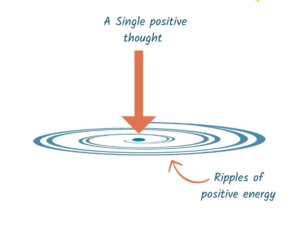In Corporate world, Leaders are not just a part of decision-making process, but they are also key role players in culture of the organisation. On of the most powerful tools for any leader is interpersonal communication. The way you, as a leader, communicate with your team sets a tone for how your team interacts, collaborate and perform. It creates a Ripples- Small actions that spreads outwards, shaping the entire workplace culture.
Why Communication Matters More Than You Think
Workplace culture isn’t all about policies or Regulations. It is developed everyday through words, actions and interactions. A leader who communicates openly, clearly, and respectfully fosters an environment of trust and safety. Other hand Inconsistent or unclear communication can lead to confusion, low morale, and even attrition.
Your communication style it may be assertive, passive, aggressive or emphatic. It sets a benchmark for your team. Team members often observe and adjust their communication after their leaders, creating a ripple effect. This influences team dynamics, productivity, and engagement of employees.

The Science Behind the Ripple
Research conducted in organization behaviour shows that the communication styles directly impact employee motivation and collaboration. For example:
- Transparent communication increases trust and reduces workplace rumours.
- Empathetic listening enhances emotional safety, encouraging employees to share ideas and concerns.
- Constructive feedback promotes growth, whereas harsh criticism fosters fear and disengagement.
When a leader is mindful of their tone, body language, and choice of words, they create ripples of respect and collaboration.
Positive Ripple vs. Negative Ripple
- Positive Ripple: Imagine a leader who begins meetings by acknowledging team efforts, asks for input, and communicates decisions with clarity. Over time, employees feel valued, become proactive, and collaborate more willingly.
- Negative Ripple: Contrast this with a leader who often interrupts, sends vague emails, or avoids tough conversations. The result? Miscommunication, siloed work, and low morale.

How to achieve Positive ripple effect as a Leader-
As a leader you are responsible for creating Positive ripple effect. There are multiple different ways to achieve this
- Active Listening
As a leader listening without judgement and responding thoughtfully creates an inclusive environment. Active listening involves not just hearing words but understanding intent, emotions, and unspoken cues.
- Communicate with Clarity and Consistency
If as a leader, you are sending a Mixed messages it can confuse employees. Whether it’s sharing a vision, setting goals, or delivering feedback, be clear, concise, and consistent.
- Use Empathy as a Communication Tool
Empathy doesn’t mean agreeing with everyone but acknowledging their perspective. Phrases like “I understand where you’re coming from” or “Let’s find a middle ground” build stronger connections.
- Lead by Example
Your team watches how you handle conflict, deliver tough feedback, and celebrate success. Demonstrate the communication style you wish to see across your organization.
- Encourage Open Dialogue
Create channels—town halls, team huddles, or anonymous surveys—where employees feel safe to express their opinions. When dialogue flows, innovation follows.
Impact of Positive ripple effect Workplace Culture
Over time, your communication style becomes part of your organizations culture. Leaders who invest in effective interpersonal communication often notice: Increased employee engagement, Reduced conflicts and misunderstandings, Higher retention rates and A collaborative and innovative culture.
In contrast, neglecting the way you communicate can result in an unspoken culture of fear, silence, or disengagement.
As a leader, your words carry weight far beyond meetings and memos. Each conversation is an opportunity to set the tone, shape perceptions, and inspire action. By consciously adopting a communication style rooted in clarity, empathy, and consistency, you create ripples that turn into waves—waves of trust, innovation, and collective success. The ripple effect is real, and it starts with you.




